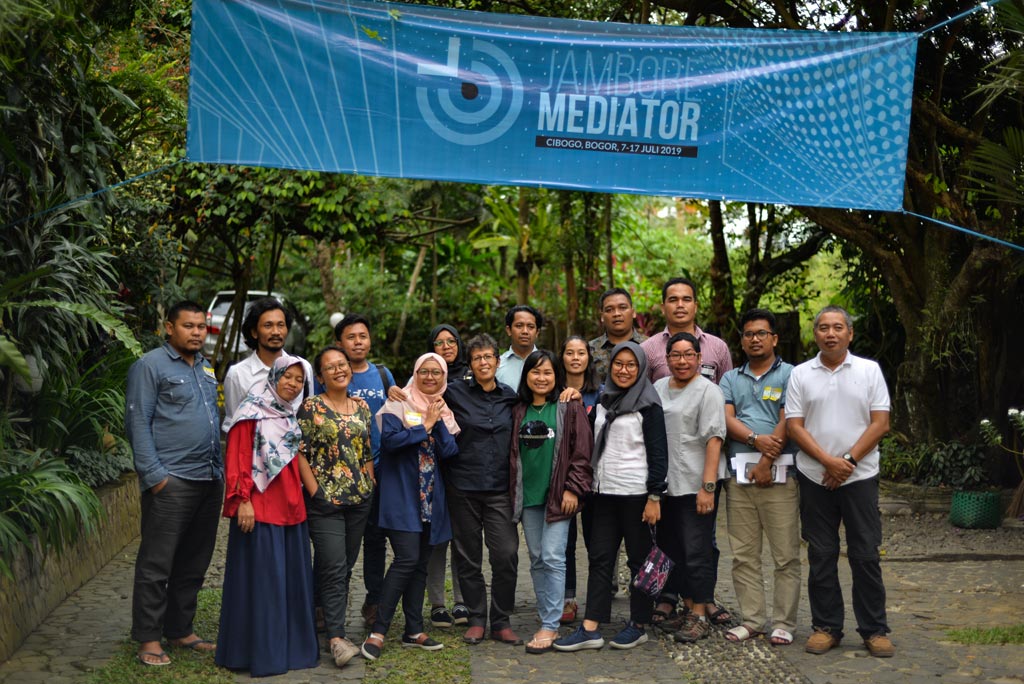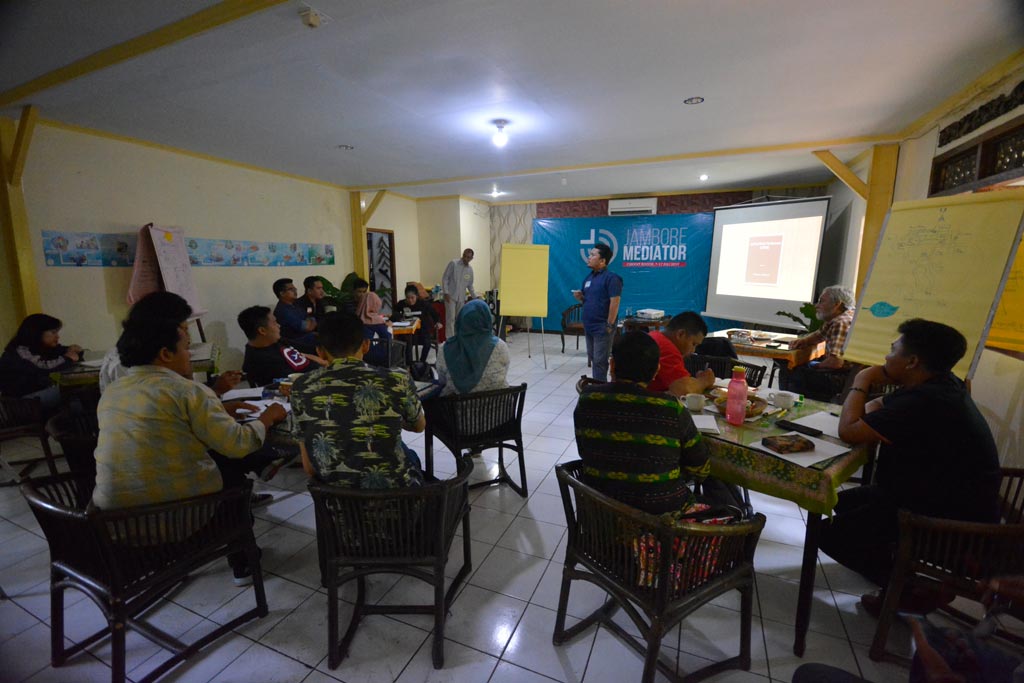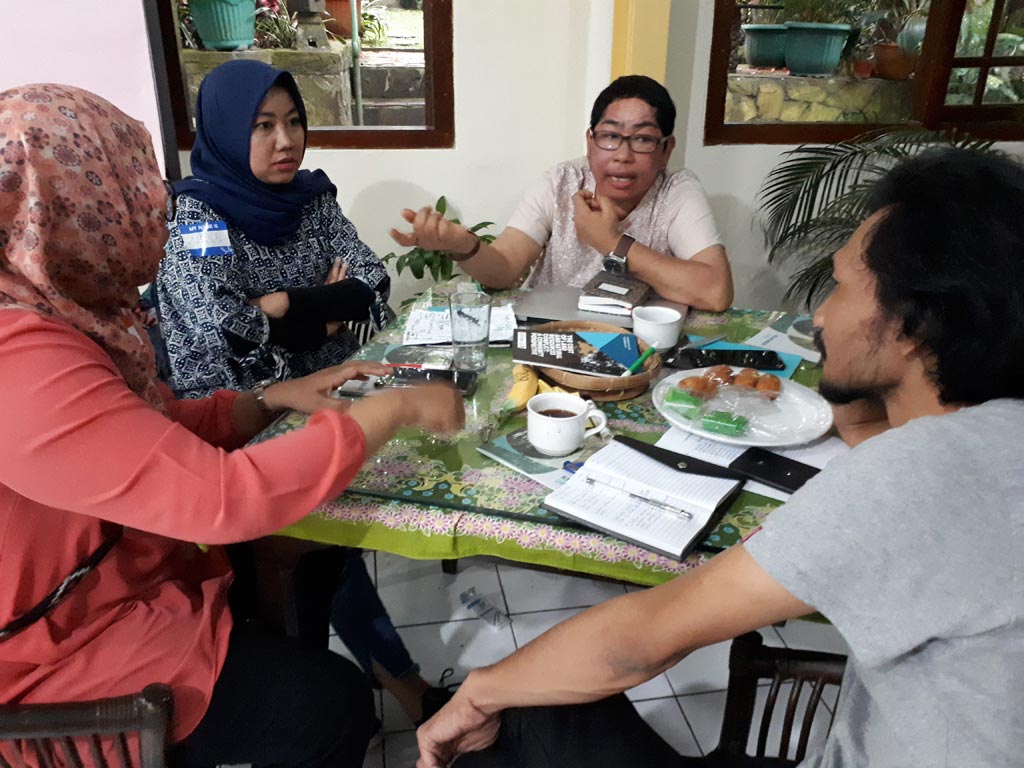Jamboree of Mediator
 23 August 2019
23 August 2019
What’s on your mind when you hear the word Jamboree?
Scout? Boy scout?
Nothing wrong, Jamboree is indeed closely related to the activities of scouts.
Wikipedia website refers to the word Jamboree in the activities of scout gatherers in the a large campsite. The scale of this meeting is involves member from the branch level to the national level. Even in the world, there is a World Jamboree which first held on 1920 in England and continues to this day.
Meanwhile, the Oxford Canadian dictionary mentions the term Jamboree has being used in the 19th century. A poet, Robert W. Service, has used it. The world legendary music group, Rolling Stone also uses it in the song Athabaska Dick. At that moment, the word Jamboree means a large, noisy meeting.Further Baden-Powell said that “people gave different meanings to the word, but from this year, Jamboree will be interpreted specifically. This will be linked to the biggest youth gathering ever.”
Large gathering was the meaning that CRU wanted to represent in the Mediator Jamboree activity. At the meeting which took place from 7 to 17 July 2019, the CRU invited 15 novice mediators from all over archipelago selected by CRU’s internal teams to participate in a series of events intended to increase the capacity of young mediators in handling conflict resolution, specifically land and natural resource conflict especially in expertise in building the case for mediation.

Judging from the time allocation and material provided, this event cannot be said to be an ordinary meeting. Mean a while the term of training which is closely related to certification mechanism is also not quite appropriate since this event was not designed as formal training with a certificate as a sign of participation.
However, (without using a certificate) this event develop a learning ecosystem approach that aims to nurture these novice mediators into professional mediators. On that definition, CRU chose to use the term Jamboree of Mediator.</>
Learning ecosystem
In ecosystems, the interaction between its components allows the ecosystem to run and achieve equilibrium or balance condition. By this, it is assumed that each component performs its function optimally.
Collaborating with a team of facilitators from the Bali Lite Institute, CRU designed this ten-day meeting as a journey to create a learning ecosystem that encourages each participant to be involved, focused and passionate about learning.
To encourage this atmosphere, each individual involved in Jamboree, participants, resource persons, CRU teams and facilitators is assumed to be the learning resources itself. Here, learning material does not merely come from experts but also collected from individual experiences which utilized as collective learning resources. By this, interactions between learning resources will encourage the formation of ecosystem learning. In short, the Mediator Jamboree requires each individual involved to contribute to sharing as well as to receiving knowledge and utilize it to create and maintain the learning ecosystem.
To help participants stay focused, easily understand and stay enthusiastic with the process, three layers of learning material are arranged. Those material are grouping in at the background of conflict, arena of conflict and conflict resolution group materials.

In the conflicts background session, participants were given a basic understanding that needed to be understood by a mediator of land and natural resource conflicts such as the ecology of the Indonesian archipelago, ethnography and anthropology of the Indonesian archipelago, gender perspectives as well as social, economic and political aspects and their natural links to land and resource conflicts.
Meanwhile, in the arena of conflict session, participants were given material about spatial planning, the relationship between business and investment with conflict, legal and policy aspects in agrarian conflicts and partnerships. Furthermore, participants were given material about the methodology, compass morale of the mediator, the code of ethics of the profession of mediators in the conflict resolution material group.
The material above is the material chosen by the CRU team to enable participants to build their capacity in building cases to be eligible for mediation.
To assure those materials be able to absorbed by the participants, Jamboree of Mediator adopted several approaches such as the andragogy approach, accelerated learning models and experiential learning in the form of a theater-style sense processing exercise.
The combination of these approaches allows the complex yet concise materials to absorbed into the participant’s niche of knowledge.
A theater performance by the participants whose stories depicted the atmosphere of the learning atmosphere created during the event closed this ten days intensive large meeting.

